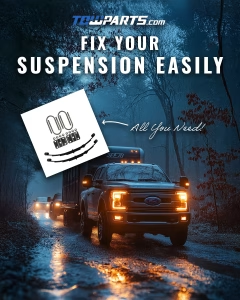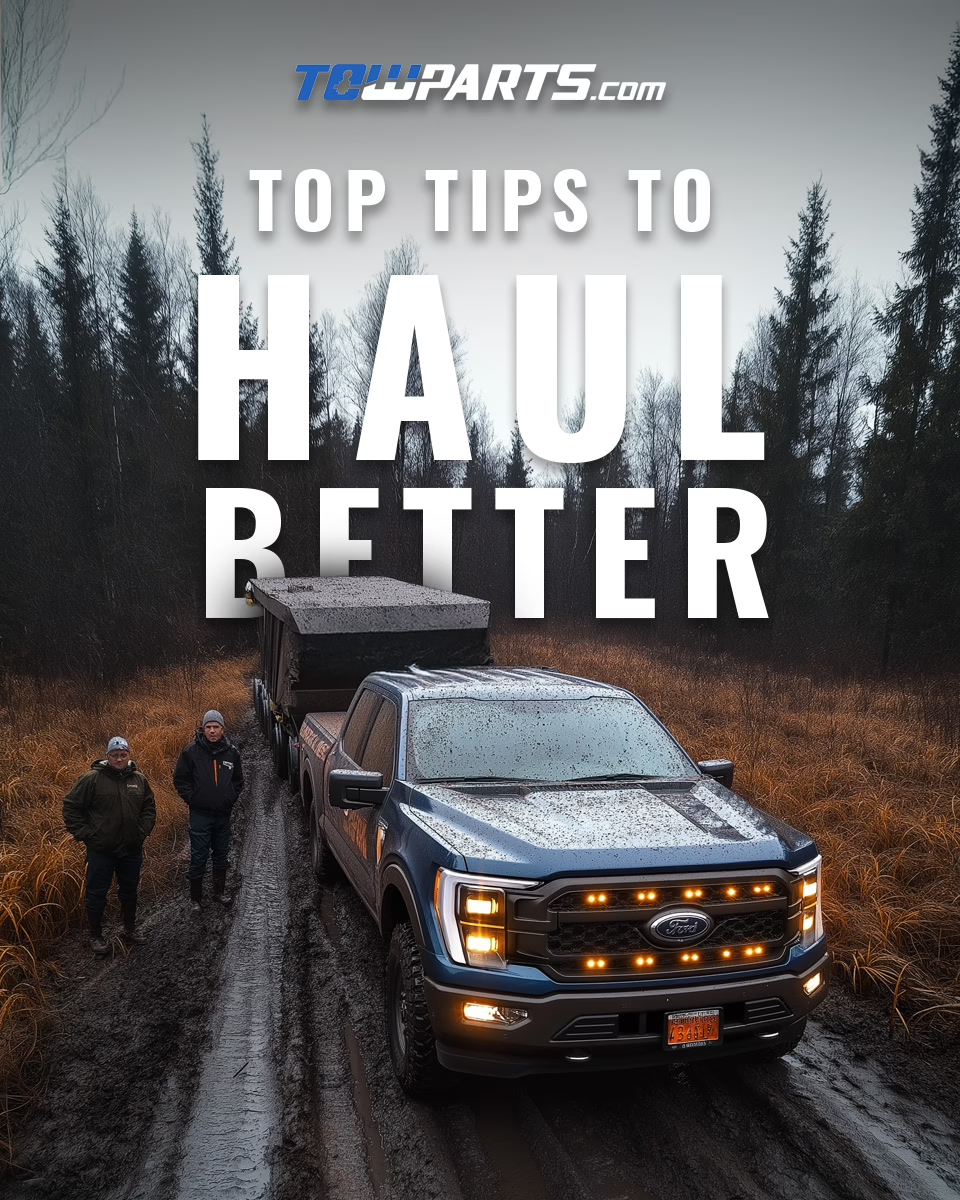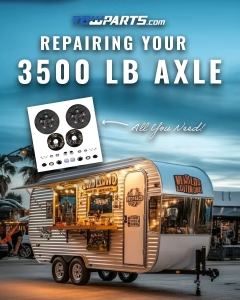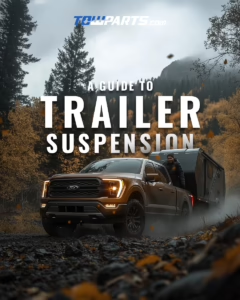
Choosing the Right Trailer Suspension Kit for a Smooth Ride
Your trailer’s suspension system does more than just absorb bumps—it ensures smooth towing, better weight
When it comes to hauling a trailer, there’s more to it than simply hitching up and hitting the road. Whether you’re towing a light utility trailer, a small camper, or a medium-duty work trailer, following best practices can greatly improve safety, handling, and overall efficiency. By taking the time to understand proper setup, weight distribution, braking, and maintenance, you’ll enjoy smoother rides and more confident control behind the wheel.
In this comprehensive guide, we’ll explore practical tips to help you haul a trailer better, from initial preparation to fine-tuning on-road performance. With these insights and the right equipment, you’ll reduce stress, minimize the risk of accidents, and prolong the life of both your tow vehicle and trailer.
Before you think about hauling, ensure your setup is correct:
Choose the Appropriate Hitch:
Not all hitches are created equal. Selecting a hitch rated for your trailer’s Gross Vehicle Weight Rating (GVWR) and ensuring it matches your truck’s tow capacity is critical. Heavier loads may require a weight-distributing hitch for better load balance. The right hitching system minimizes sway, improves steering control, and reduces stress on your vehicle’s suspension.
Don’t Skimp on Brakes:
Reliable trailer brakes are essential for safe towing, especially if you’re carrying heavier loads. Consider upgrading to electric brakes if your trailer doesn’t have them, or ensure existing brakes are well-maintained. Explore Trailer Brakes at TowParts.com for quality, certified components. High-quality brakes give you more stopping power, reducing the risk of brake fade and improving overall safety.
Check Your Tires and Wheels:
Tire quality and proper inflation drastically affect how your trailer handles. Underinflated tires cause sway, reduce fuel efficiency, and increase the risk of blowouts. Confirm that your tires meet the load rating for your trailer and regularly inspect them for wear, cracks, or damage.
Proper Load Placement:
Hauling a trailer better starts with distributing weight correctly. Aim for about 60% of the load weight in front of the trailer’s axle(s) and 40% behind it. This front-loaded approach maintains stability, reduces sway, and ensures smoother, more predictable handling.
Consider Upgraded Axles or Suspension Components:
If you regularly carry heavier loads or feel your trailer struggles with certain cargo, upgrading your axle or suspension parts can help. A higher-capacity axle or service kit can enhance durability and control. For example, if you need an upgrade, consider a 3,500 lb Trailer Idler Axle Service Kit – 3.5K Capacity – 5 on 4.5 to boost carrying capacity and reliability. Certified, high-quality components ensure your trailer remains stable even when loaded to its capacity.
Use a Weight-Distributing Hitch:
For larger or heavier trailers, a weight-distributing hitch helps balance tongue weight across the tow vehicle’s axles. This leads to improved steering control, better braking response, and less trailer sway.
Double-Check Coupling:
When hooking your trailer to the tow vehicle, ensure the coupler is fully seated on the hitch ball and locked. A quick tug test before taking off can confirm a secure connection. Don’t forget the safety chains—cross them under the hitch to catch the tongue if it disconnects.
Use Your Trailer’s Brakes Wisely:
Trailers equipped with electric brakes can greatly enhance control. Before setting off, test brake functionality. Adjust your brake controller to achieve a balanced braking feel—too aggressive and you’ll feel jerky stops; too soft and you risk overrunning the tow vehicle’s brakes.
Downshift for Better Control on Descents:
When driving downhill, avoid riding your brakes continuously. Instead, downshift to a lower gear to use engine braking, maintaining a steady speed and preventing brake overheating. This technique reduces wear and tear, lowers the risk of brake fade, and enhances safety.
Maintain Safe Following Distances:
Hauling a trailer better involves giving yourself more room to maneuver. Increase following distances by at least a second or two, especially when carrying heavier loads. This extra space provides the time needed to brake smoothly and avoid sudden stops or collisions.
Utilize Sway Control Systems:
Trailer sway can be unsettling and dangerous. Installing a sway control device helps keep the trailer aligned with your tow vehicle, reducing side-to-side movement caused by wind, passing trucks, or uneven roads.
Upgrade Suspension and Bearings:
Smooth towing isn’t just about brakes and tires. Properly maintained bearings and seals ensure wheels rotate smoothly, reducing vibrations and oscillations. Consider Axle Bearing Kits for smoother operation. Additionally, a well-maintained suspension with quality components keeps the trailer stable and easier to handle.
Avoid High Speeds:
Just because the speed limit allows 70 mph doesn’t mean you should drive that fast while towing. Keeping your speed moderate (around 55-65 mph) significantly reduces sway and improves handling. Slower speeds help maintain control and protect your trailer’s components from excessive stress.
Choose Suitable Roads:
Whenever possible, select routes with smoother roads and fewer steep inclines or sharp curves. Planning ahead can prevent white-knuckle moments and minimize wear on brakes, suspension, and drivetrain.
Check Wind and Weather Conditions:
Strong winds, rain, or icy roads can challenge even the most seasoned driver. If conditions are rough, consider waiting until they improve. If not possible, slow down and stay vigilant, making gradual steering and braking inputs to keep the trailer under control.
Respect Your Trailer’s GVWR and Axle Rating:
Overloading is a shortcut to poor handling, increased wear, and potential accidents. Always know your trailer’s Gross Vehicle Weight Rating (GVWR) and never exceed it. Consider using a 2,000 lb Idler Trailer Axle Service Kit – 2K Capacity – 5 on 4.5 if you routinely haul at this capacity, ensuring your trailer’s mechanical integrity.
Distribute Gear Evenly:
Beyond front-to-back placement, consider side-to-side balance. Uneven weight distribution can cause one side to sag, reducing stability and making steering less predictable.
Inspect Your Trailer Frequently:
Catching issues early keeps you hauling better and safer. Inspect bearings, brakes, tires, and suspension components before and after each trip. Look for signs of wear, unusual noises, or leaks.
Follow Manufacturer Guidelines:
Your trailer’s owner’s manual provides load limits, maintenance intervals, and specific requirements for lubrication, bearing adjustments, and brake servicing. Following these guidelines prolongs component life and ensures reliable towing performance.
Trustworthy Components Matter:
Buying low-quality parts can lead to failures at the worst moments. Choose certified products that meet or exceed industry standards for strength, durability, and performance.
At TowParts.com, many of our products undergo rigorous testing and adhere to certifications from organizations like:
• CSA (Canadian Standards Association): www.csagroup.org
• SAE (Society of Automotive Engineers): www.sae.org
• QAI (Quality Auditing Institute): www.qai.org
When you invest in certified axles, bearings, hubs, and brakes, you gain confidence in their ability to handle long hauls and challenging conditions.
Start Small and Build Up:
If you’re new to towing or hauling a heavier trailer, practice in an empty parking lot or on quiet backroads first. Learn how your trailer responds to steering, braking, and acceleration in a controlled environment.
Refine Your Maneuvering Skills:
Backing up with a trailer can be challenging. Take time to hone your reverse driving technique. Small, controlled steering inputs and patience pay off, making it easier to position the trailer exactly where you need it.
Maintain a Calm Mindset:
A calm, patient driver is a safer driver. Avoid abrupt maneuvers, sudden lane changes, or harsh braking. Smooth, gradual adjustments make towing safer, more predictable, and more enjoyable.
Hauling a trailer better boils down to preparation, equipment quality, and careful driving habits. By ensuring proper weight distribution, selecting the right hitch and axle capacity, maintaining reliable brakes, and choosing certified, high-quality parts, you set yourself up for success. Combine these measures with steady speeds, thorough route planning, and consistent maintenance, and you’ll discover a more relaxed, controlled, and enjoyable towing experience.
Improving your towing skills and gear isn’t just about preventing accidents—it’s about gaining confidence, increasing efficiency, and protecting your investment. With the right knowledge, equipment, and mindset, you’ll soon master the art of hauling a trailer behind your pickup truck, no matter the journey ahead.


Your trailer’s suspension system does more than just absorb bumps—it ensures smooth towing, better weight

One of the first big decisions you’ll face as a trailer hauler is choosing between

A well-maintained axle is the key to smooth, safe towing. If you’re noticing uneven tire

Your trailer’s performance, safety, and longevity depend on high-quality trailer axles. Understanding their purpose, recognizing

Towing a trailer requires more than just attaching it to your vehicle—it demands careful inspection,

Discover how the right trailer suspension can transform your towing experience. From leaf springs to